
Aloo Paratha is a beloved Indian flatbread, hailing from Punjab. It's known for its tasty potato stuffing, making it a flavorful and satisfying dish.
Homemade Punjabi Style Significance The term "Homemade Punjabi Style" highlights the authentic and traditional approach to crafting this dish. It's about capturing the essence of Punjabi cuisine with a personal touch.
Emphasis on Traditional Cooking Aloo Paratha is more than a meal; it's a connection to Indian culinary traditions. Using basic ingredients and traditional methods, it brings simplicity, nostalgia, and a taste of cultural heritage to the table.
A. Boiling and mashing potatoes:
B. Adding spices and seasonings:
C. Incorporating chopped green chilies and coriander leaves:
D. Mixing the ingredients thoroughly:
This flavorful combination of ingredients forms the heart of the Homemade Punjabi Style Aloo Paratha, providing a delicious and satisfying experience.
Now, with your well-rested and smooth dough, you're ready to proceed with the assembly and cooking of your Homemade Punjabi Style Aloo Parathas.
1. After allowing the dough to rest, divide it into small, lemon-sized portions.
2. Roll each portion between your palms to form a smooth, round ball.
1. Take one dough ball and dip it into dry flour to prevent sticking.
2. Place the ball on a flat surface and gently press it with your fingers to form a small disc.
3. Using a rolling pin, roll out the disc into a larger circle, about 6 inches in diameter.
4. Aim for an even thickness throughout to ensure even cooking.
1. Spoon a generous portion of the prepared aloo filling onto the center of the rolled-out dough.
2. Ensure an even distribution of the filling, leaving a small border around the edges.
1. Carefully lift the edges of the rolled-out dough to cover the filling, creating a semi-circle.
2. Press the edges to seal the paratha, ensuring no filling escapes during cooking.
3. Optionally, you can crimp the edges for a decorative touch.
4. Roll out the semi-circle into a larger circle again, maintaining a consistent thickness.
1. Preheat a tawa (griddle) or a non-stick pan over medium heat.
2. Place the assembled paratha on the hot surface.
3. Cook for a minute or until small bubbles appear on the surface.
4. Flip the paratha and cook the other side until golden brown, applying ghee or oil as needed.
5. Repeat the process for the remaining portions.
1. Continue the process of dividing, rolling, filling, sealing, and cooking for each dough portion.
2. Work efficiently to maintain the freshness of the dough and ensure uniform cooking.
1. Once cooked, brush the surface of each Aloo Paratha with ghee for enhanced flavor and a shiny appearance.
2. This step adds richness and authenticity to the Punjabi-style Aloo Paratha.
1. Serve the hot Aloo Parathas immediately.
2. Garnish with additional chopped coriander leaves for freshness and color.
3. Pair with yogurt, pickles, or chutney for a delightful and complete meal.
By incorporating these tips and exploring various filling options, you can customize your Homemade Punjabi Style Aloo Paratha to suit your taste preferences and experiment with different flavors.

1. What makes Punjabi Style Aloo Paratha unique?
Punjabi Style Aloo Paratha stands out for its flavorful mashed potato stuffing, enriched with aromatic spices. It's a classic dish originating from the culinary heritage of Punjab, known for its robust and hearty flavors.
Yes, you can use any variety of potato for the filling. However, waxy potatoes like Yukon Gold or red potatoes are preferred for their creamy texture.
You can easily customize the spice levels by adjusting the quantity of green chilies, red chili powder, and garam masala in the potato filling. To suit your taste, start with less and add more as needed.
While ghee adds a rich flavor, you can use oil or a combination of oil and butter if you prefer. Ghee, however, is a traditional choice that enhances the overall taste.
Sure, you may make the potato filling in advance and keep it chilled. This can save time when you are ready to assemble and cook the parathas.
Knead the dough thoroughly and allow it to rest for at least 15-20 minutes. This resting period helps in gluten development, resulting in a softer and more pliable dough.
You can experiment with gluten-free flours like rice flour or chickpea flour to make a gluten-free version. However, the texture and taste may vary.
Aloo Paratha pairs well with yogurt, pickles, chutney, or raita. Some also enjoy it with dal (lentil curry) or a side of fresh salad.
Yes, you can freeze Aloo Paratha after cooking. Allow them to cool, separate them with parchment paper, and store them in a freezer-safe container. Reheat on a griddle or pan when ready to eat.
Cook the Aloo Paratha on medium-high heat and ensure both sides are well-browned. Brushing the paratha with ghee during cooking also adds a crispy texture.
Mashed potato and tender wheat crust combine to create a comforting, classic Indian meal called Aloo Paratha. Boiled and mashed potatoes should first be seasoned with garam masala, turmeric, cumin, and red chili powder. For an added burst of flavor, add some finely chopped green chiles and fresh cilantro.
One brief kneading makes the whole wheat flour dough supple. Place the rolled-out sections onto a heated griddle, fill with the spicy potato mixture, and seal. Tossed in a little ghee gives the parathas a beautiful crispy layer.
Served hot, Aloo Paratha is a delightful meal on its own or paired with yogurt, pickles, or chutney. It's a simple, comforting dish that captures the heart of homemade Indian cuisine, perfect for any meal. Enjoy the warmth and tradition in every bite of Aloo Paratha!
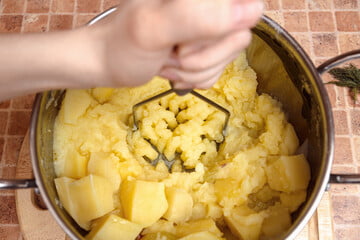

Incorporating chopped green chilies and coriander leaves:
Mixing the ingredients thoroughly:
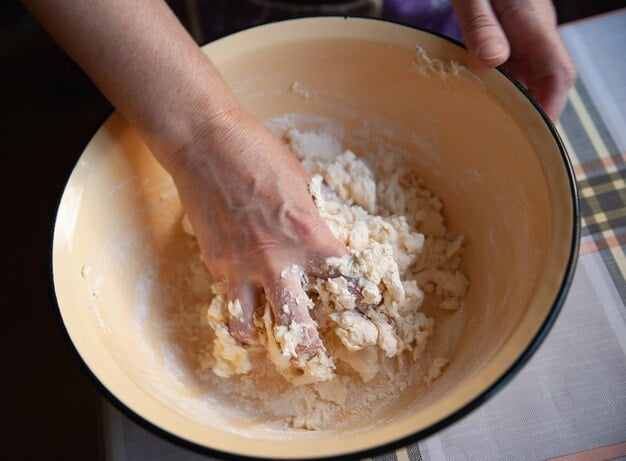

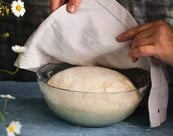

2. Roll each portion between your palms to form a smooth, round ball.

Take one dough ball and dip it into dry flour to prevent sticking.
2. Place the ball on a flat surface and gently press it with your fingers to form a small disc.
3. Using a rolling pin, roll out the disc into a larger circle, about 6 inches in diameter.
4. Aim for an even thickness throughout to ensure even cooking.
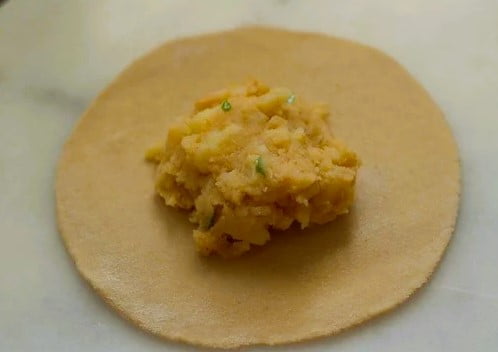
Take one dough ball and dip it into dry flour to prevent sticking.
2. Place the ball on a flat surface and gently press it with your fingers to form a small disc.
3. Using a rolling pin, roll out the disc into a larger circle, about 6 inches in diameter.
4. Aim for an even thickness throughout to ensure even cooking.
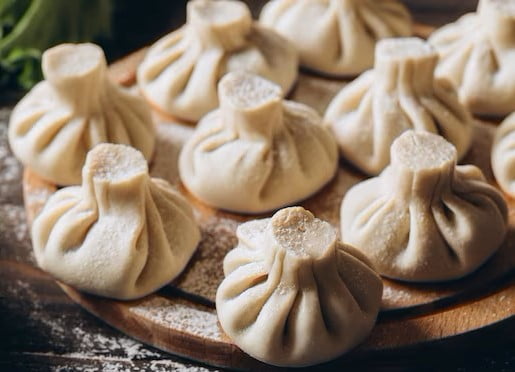
Carefully lift the edges of the rolled-out dough to cover the filling, creating a semi-circle.
2. Press the edges to seal the paratha, ensuring no filling escapes during cooking.
3. Optionally, you can crimp the edges for a decorative touch.
4. Roll out the semi-circle into a larger circle again, maintaining a consistent thickness.
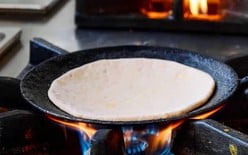
1. Preheat a tawa (griddle) or a non-stick pan over medium heat.
2. Place the assembled paratha on the hot surface.
3. Cook for a minute or until small bubbles appear on the surface.
4. Flip the paratha and cook the other side until golden brown, applying ghee or oil as needed.
5. Repeat the process for the remaining portions.
1. Continue the process of dividing, rolling, filling, sealing, and cooking for each dough portion.
2. Work efficiently to maintain the freshness of the dough and ensure uniform cooking.

. Once cooked, brush the surface of each Aloo Paratha with ghee for enhanced flavor and a shiny appearance.
2. This step adds richness and authenticity to the Punjabi-style Aloo Paratha.
Thank you for visit our website